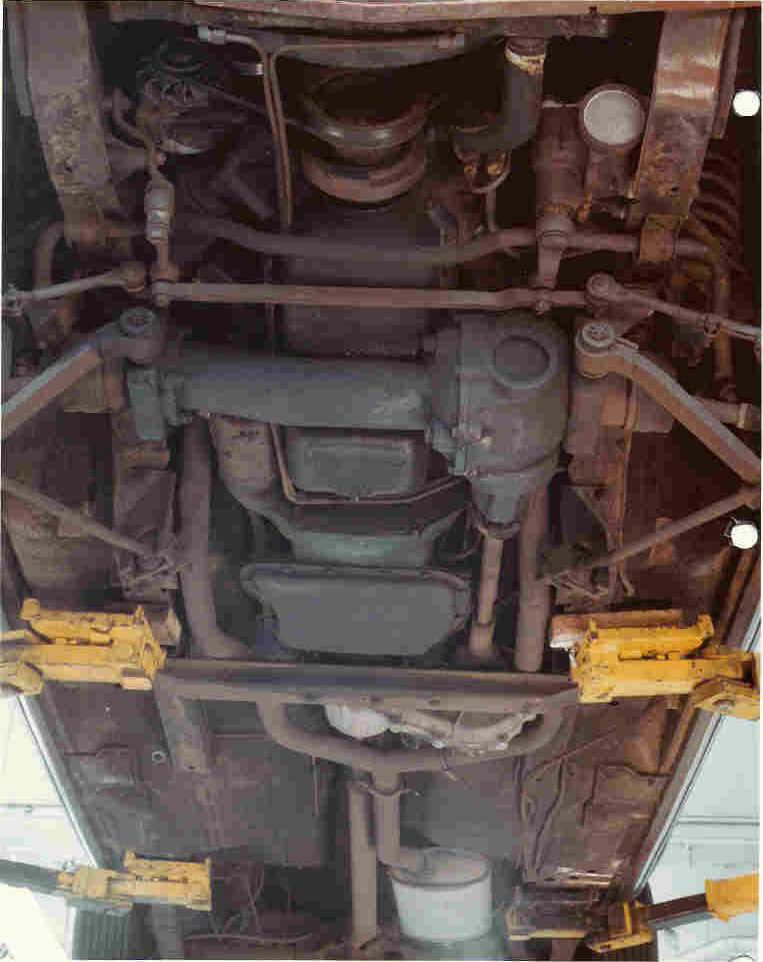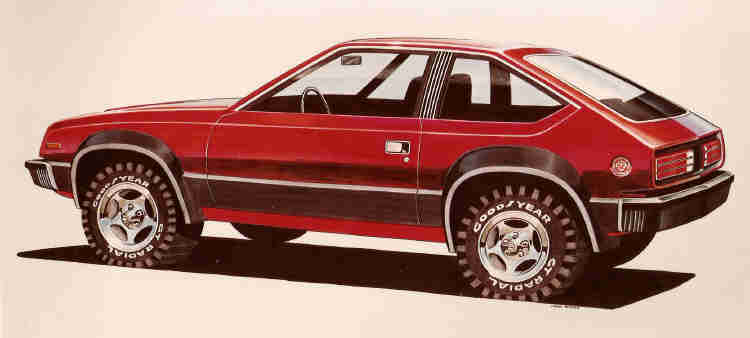AMC Eagle History
The American Motors Corporation (AMC) was formed in 1954 with the merger of Hudson and Nash. Both independent car companies had been known for their innovations; despite this they were both struggling to remain economically viable. After the merger was completed Hudson's Detroit plants were shut down and all automobile production was consolidated within Nash's Kenosha Plants. And thus began the saga of the American Motors Corporation. The last independent U.S. auto maker which supplied millions of drivers in the United States, Rrance, Holland, Finland, Mexico, Australia, South American countries and in other countries world wide with Ramblers, Javelin/AMX’s, Hornets, Gremlins, Jeeps, Pacers and of course the Eagle to name a few of their well remembered nameplates. For a more extensive history of AMC please go to http://en.wikipedia.org/wiki/American_Motors_Corporation#Products
The AMC Eagle was the last true AMC car built by the company. Although underfunded and unappreciated during its time the AMC Eagle is often referred to as the first modern Sport Utility Vehicle (AMC called it a Multi Purpose Vehicle). In true AMC fashion they marketed a vehicle nearly 20 years or so before its time!
AMC's chief Jeep engineer, Roy C. Lunn, began tinkering with a car based four wheel drive set-up during 1972 3 years prior to Subaru's introduction of its simplistic part-time 4wd system in 1975. Mr. Lunn felt that if anyone was going to market a true full-time 4WD car it should be AMC who had purchased Jeep in 1970. Contrary to what many believe, Mr. Lunn did not intend to use much of the Jeep 4WD technology of the time in a car as he felt it lacked the refinement needed for automotive use. In 1972 AMC's Jeep Engineering department modified a 1972 Hornet into a all-wheel drive car utilizing a specially contstructed "QT 1" straight thur drive transfer case; a frame mounted Warner Gear Front axle; and Dana constant velocity drive shafts. The finished prototype proved successful during subsequent testing. However, gasoline shortages of the time precluded putting the car into production (the whereabouts of this prototype is unknown). Retired AMC chairman Gerry Meyers adds what his thoughts were when the prototype was shown to AMC execs, "Our initial reaction to Lunn's concoction was, 'What the hell is it?"
In December 1976 and January 1977 the idea was revisited with the advent of the viscous coupled transfer case recently developed by British based FF Development. In February of 1977 a 1977 Hornet was shipped to England to be reengineerd into a full-time four wheel drive car. Total development cost for this (less the price of the car) was only $34,000! The finished car was returned to the U.S. on June 15th of 1977. The production project proposal to AMC execs was in their hands only two weeks later with production scheduled to begin at the beginning of the 1980 model year.
The year is now 1978. AMC was reeling from lagging sales. Their tried and true, dependable small Concords (based on the Hornet) and Spirits (based on the Gremlin) were not selling well and AMC was cash starved having sunk what development money they had into the innovative, far ahead of its time, but fast failing Pacer models. AMC was no longer producing their larger models (Ambasadors and Matadors) but they were selling tens of thousands of Jeeps.
Meyers, went on to say this took place in 1978, "After the Pacer, we were looking for something fresh and cheap to produce. We had given up on automobiles, and all of our creative efforts were focused on Jeep. So Dick Teague [AMC design chief] took Lunn's 4WD car into the studio to improve the cosmetics by adding plastic skirts around the wheel wells. With the appearance issue solved, producing the Eagle was a no-brainer. We were so hungry for something different that we didn't bother with market research," Myers continues. "It was, for all intents, a no-cost experiment (AMC needed to only sell 15,000 Eagles to recoup all develompent costs) that began with three Concord body styles in 1980 and continued with two more Spirit-based models in 1981. Sales were sufficient to make us glad we built the Eagles, and our dealers -- especially those in Colorado and New England -- were thrilled to have these unique products."
Lunn intitially chose the New Process (later New Venture) model 119 transfer case whose limited-slip function was provided by a viscous coupling. This silicone-filled device provided controlled slippage for smooth, dry-pavement cornering with the automatic locking necessary for low-traction conditions. Lunn's other special feature was the Eagle's independent front suspension, achieved by mounting the front differential to the engine block and providing drive to the wheels via universal joints and half shafts.
When the Eagle was introduced to the press this observation was made by Popular Science writer Ed Jacobs in a 1979 article from the same magazine wrote, " This new flock of off-road vehicles is designed for people who want the all weather traction and safety of four wheel drives, but don't like the truck-like four wheelers currently on the market. They ride about as comfortably and handle about as well as any other cars their size on the road. Off road they behave more like mountan goats as do their truck like Jeep cousins."
1980 Eagles sold very well (by AMC standards) however in true AMC fashion sales began to drop after the first three years. With the merger of AMC and Renault in 1983 AMC no longer aggressively marketed the Eagle and by the time Chrysler purchased AMC in 1987 the AMC Eagle was down to one model, the station wagon, and sales amounted to only a few thousand cars.
Nearly 200,000 Eagles were produced at the Kenosha, WI and Brampton, Ont. plants from model year 1980 thru model year 1988. Here now are those cars:
1980 1981 1982 1983 1984 1985 1986 1987
1988
